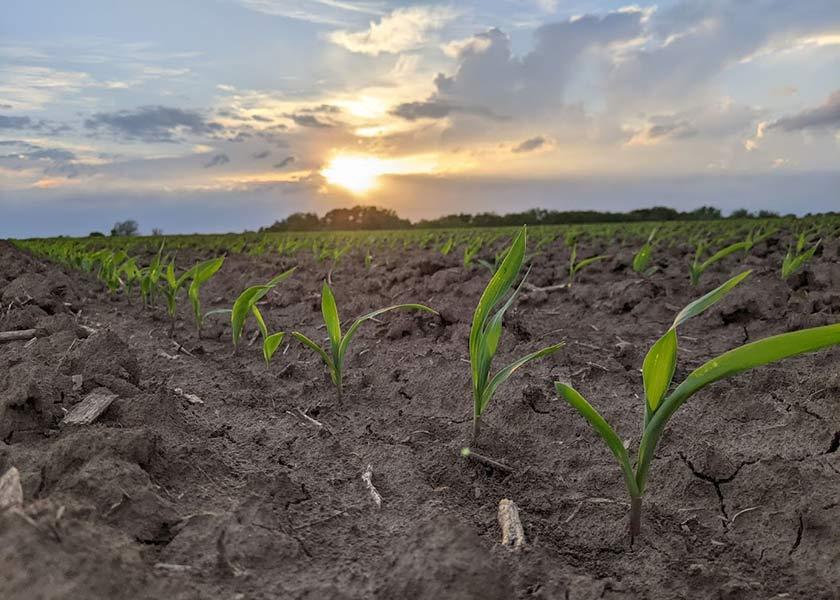Four Keys to Unlocking Yield Potential with Better Nitrogen Management
As growers, we can often find ourselves sharing how much — or lamenting about how little — organic matter we have based on our soil testing reports. While the importance of organic matter is generally understood, we continue to struggle as an industry to put that knowledge into action.
“We get an organic material estimation with every soil test, but how does a grower use that?” asks Dr. Kess Berg, chief technology officer and co-founder at Advanced Agrilytics. “Many don’t know how to use it.”
So, how can we use organic matter to make better decisions — especially about nitrogen management — to improve productivity in our corn fields? Berg advises growers to use it as part of the equation but to also consider other factors when deciding how much nitrogen you need to achieve the yield you want. Here are four keys to unlocking yield potential through better nitrogen management:

Landscape Position:
Research shows that plants located in higher landscape positions often achieve canopy later than those at lower elevations. Soil temperatures in higher landscapes remain cool
until the mid-to-late-vegetative stages, and those elevations usually have less available water throughout the growing season.
These key factors help us better understand mineralization rates and total nitrogen supply, and, more importantly, they can help us predict available nitrogen for the crop. “Think about temperature and moisture,” Berg says. “That lower-lying area is darker because it has more organic matter, but it also could be more saturated or warmer, depending on drainage, in the first 20 days around planting. The higher elevation, lower organic matter soil will be cooler in those first 20 days after planting, so it has less mineralization and less available nitrogen. Following that, it starts to run out of moisture and soil temperatures start to warm, limiting nutrient mobility and uptake.”

substantial amounts of nitrogen can be mineralized by organic matter to increase crop production. For this reason, understanding the environment is critical to optimizing
nitrogen input decisions. “You need to treat each sub-acre as an individual,” Berg says.

Another common industry practice is placing more nitrogen on better producing soils, rationalizing that a greater nitrogen requirement comes with higher yield potential. Better-producing soils typically also have higher organic matter. Assuming an area of a field has organic matter of >3.5%, we could mineralize upwards of 120-140 lbs. N/acre. With that information, would we still place more nitrogen on these higher organic matter soils?
In that same vein, the rationale of cutting back on high-ground acres that will yield less and typically have lower organic matter may seem economically sound. However, knowing these acres will mineralize less than half the nitrogen compared to the lower landscape acres, is this decision agronomically sound? “No,” Berg responds. “When you cut back, that’s a self-fulfilling prophecy. You’re going to have a lower yield.”

Timing Nitrogen Applications for Success:
While more nitrogen needs to be added to the lower organic matter acres, adding the higher rate earlier in crop development — at planting or just prior to — is key. The increased availability of nitrogen will promote increased plant growth to get the crop to canopy faster. The canopy decreases soil temperature because of shading and retains more moisture by limiting evaporation, in turn, increasing the nitrogen mineralization rate. “On the water-limited acre (higher elevation, lower organic matter), you need to increase the rate and do it early,” says Berg.
The higher organic matter soils do have a greater potential yield. However, they already have an advantage with increased organic matter. They also have a greater potential for saturation and, thus, leaching and denitrification. Early nitrogen applications (fall, preplant or very early side-dress) should include an added stabilization product to protect against nitrogen loss in these more saturated environments.

Making the Right Plan:
A good plan is more than just applying higher amounts of nitrogen to the lower organic matter acres and less to the higher ones. Application timing is just as important as the
amount of nitrogen applied. As mentioned, the higher elevation, lower organic matter acres benefit most from early season applications, while the lower lying, higher organic matter areas will need more as the season progresses. Applying higher rates of nitrogen to higher organic matter soils is not as beneficial early in the season. While practices like variable rate nitrogen have been in the industry for years, associating nitrogen rate to yield potential was not getting us to the best answers. Incorporating knowledge of the environment, organic matter and other interactions can lead growers to a nitrogen program that encompasses rate and timing, resulting in a better outcome.

*True sand, OM < 0.5% & CEC < 5
Contributing factors to the mystery of organic matter are its variability across fields, the dependence of mineralization on moisture and temperature and the Carbon-to-Nitrogen
ratio. “We need to treat each acre differently,” says Berg. “That’s what precision agriculture is about — improving every acre.”
